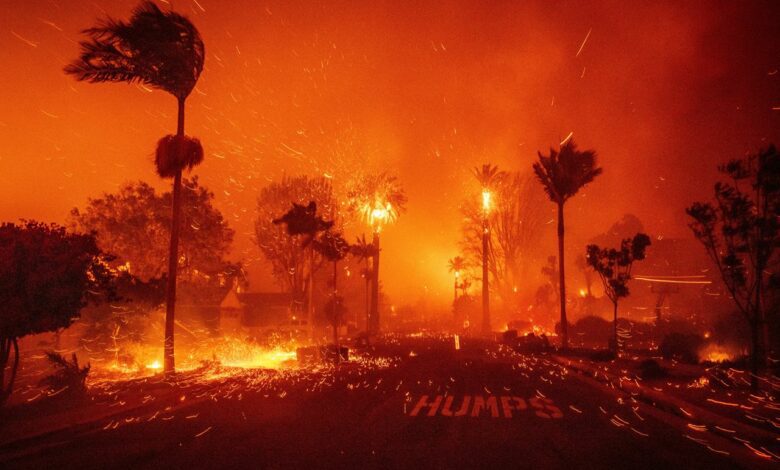Residents flee as wind-fueled wildfires destroy homes in US


Tens of thousands of people have been told to evacuate as a fast-growing fire destroys homes in the Pacific Palisades in Los Angeles. Many were forced to abandon cars in the seaside neighborhood sandwiched between Malibu and Santa Monica, which have also issued evacuation orders. With traffic slowing evacuations, and flames jumping the highway, some considered sheltering on the beach.
The out-of-control Palisades fire is blazing through about five football fields a minute and has burned more than 2,900 acres. Los Angeles has declared an emergency and officials warned that the worst is yet to come as “tornado-like” winds complicate firefighters’ battles.
Two other fires have erupted in Los Angeles County: The 100-acre strong Hurst fire north of San Fernando, and the Eaton fire in Altadena, which at 600 acres has destroyed homes and prompted evacuations. At a Pasadena senior care home, workers raced to evacuate residents with the Eaton blaze just a block away. More than 200,000 homes and buildings are without power in the county.
California has experienced a stark contrast in weather between regions, with significantly above-average rainfall across Northern California, while some parts of Southern California haven’t seen over a quarter of an inch of rainfall since early July.
A series of atmospheric rivers and atmospheric river-fueled storms have barraged Northern California and the Pacific Northwest, bringing significant precipitation. This has brought rainfall amounts to as much as 200% above normal across Northern California since October 1.
The opposite is the truth for Southern California, which has seen Santa Ana wind events and below average rainfall over the past three months. On October 1, none of Los Angeles County was under drought conditions, but according to the latest drought numbers, which came out on January 1, over 83% of the county is in a moderate drought.
On October 1, only 10% of the California as a whole was under any sort of drought conditions, the majority occurring across southeastern California. Fast forward to the latest drought numbers, over 30% of the state is experiencing some sort of drought conditions, with the majority of this occurring across Southern California. Little relief is in store for Southern California, with the Climate Prediction Center calling for below-average rainfall chances for the month of January.




